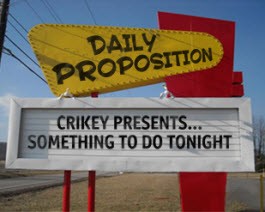It’s a good time to be a comic books geek. Hollywood is regularly raiding the comics world for inspiration. And unlike pitiful past superhero film efforts, special effects technology can now realistically portray comic book capers (well, as realistically as you can show someone with superpowers running — and flying — around) onscreen.
Spider-Man, Batman, Superman, the X-Men and Iron Man have all had the big budget movie treatment but it’s not just major superheroes who’ve made the leap in a single bound from page to movie screen. Little known characters like Kick-Ass have also benefited from the film industry’s penchant for superheroes.
The critically acclaimed Kick-Ass movie is kicking ass in cinemas thanks in no small part to a small part riotously played by Chloe Moretz as 11-year-old assassin Hit Girl. It’s a blackly funny take on costumed vigilantism following teenage nerd Dave Lizewski who decides “putting on a mask and helping people isn’t impossible” despite his classmates’ sensible assertion that “it’s crazy — you can’t do stuff like that in real life”. The comic book is worth seeking out if you enjoyed the movie.
Kick-Ass writer Mark Millar and artist John Romita Jnr’s ultra violent (albeit comic book violence) depiction of Dave’s journey from high school schmuck to costumed schmuck Kick-Ass is a profanity littered, kinetic blast. What superhero fan hasn’t fantasised about suiting and booting up to take down evil in their neighbourhood? Kick-Ass imagines what it would be like to do exactly that “in real life”. The results aren’t pretty. The bad guys don’t take kindly to anyone challenging them and dole out some pretty brutal beat downs and, in an early scene, electrode induced testicular torture.
This comic book is drenched in blood. It splashes over most of the pages’ vivid artwork as Kick-Ass, Hit Girl and her father Big Daddy battle New York’s criminal underclass. Much of the dismemberments, disembowelling and skull splitting trauma is, somewhat infamously, dished out by Hit Girl’s samurai sword. Kick-Ass also cleverly riffs on modern pop culture.
“Six weeks ago I was Heroes Season One. Now as far as the ‘net was concerned, I was Season f–king Two,” Dave notes when a new costumed vigilante Red Mist upstages Kick-Ass by busting mafia types.
It’s impressive how faithful the film adaptation’s spirit is to its source material. Not everything made the final cut but, to director Matthew Vaughan’s credit, many of the less savoury — but essential — elements (mostly involving Hit Girl) did.
There’s still enough differences to make reading Kick-Ass worthwhile; the way the tale‘s fathers are depicted being but one example. Dave’s widowed dad in the movie is a remote, uninvolved figure but is all heart in the comics. Big Daddy’s comic book (literally, comic book) reason for training Hit Girl to be a stone cold killer is bizarre but understandable to long-term comics nerds. It’s understandable why it was changed for the movie version. Even Nicholas Cage’s genius decision to basically play Big Daddy as a quietly batshit crazy Adam West-like Batman from the camp and comedic 1960s TV show wouldn’t have sold the twist to Kick-Ass cinema audiences.
Like that Batman TV show, Kick-Ass pokes fun at superhero stereotypes and shouldn’t be taken too seriously. Its twisted sense of humour is epitomised by its final line ripped straight from Tim Burton‘s 1989 Batman movie. Don’t wait. Get a load of Kick-Ass.








The movie is freakin’ hilarious and outrageous. Might have a look at the comic based on this review.